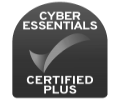Safeguarding your online assets has never been more critical as digital threats loom large and cyberattacks grow increasingly sophisticated today. And as the digital landscape evolves, so as our approach to web security.
With cybercriminals continuously refining their tactics, adopting advanced web security practices is paramount to protecting your website, data, and reputation.
At Inspire Digital, we understand the importance of staying one step ahead in the ever-evolving cybersecurity landscape. In this comprehensive guide, we'll delve into the latest advancements in web security and equip you with actionable insights to fortify your digital defences effectively.
Whether you're a seasoned web developer, IT professional, or business owner, this blog will provide invaluable guidance on bolstering your website's security posture and mitigating potential risks.
Let’s explore the cutting-edge techniques, best practices, and proactive measures that can help you safeguard your online presence and navigate the digital realm with confidence!

The importance of web security in today's digital age
In a world where online transactions and interactions have become the norm, ensuring robust web security measures is paramount.
Beyond merely protecting sensitive data, web security plays a multifaceted role in safeguarding businesses, fostering trust among users, and enhancing overall user experience.
Prevention against data breaches
With cyber threats becoming more sophisticated, the risk of data breaches becomes apparent. According to Cybersecurity Ventures, the annual cost of cybercrime worldwide is expected to hit £7.5 trillion this 2024, which emphasises the critical need for robust web security measures.
Advanced web security practices are crucial for fortifying your digital infrastructure and thwarting potential breaches that could compromise sensitive information, such as customer data, financial records, and proprietary business insights.
Maintaining user trust
Trust is the cornerstone of any successful online venture. Based on a report from Mckinsey, 87% of consumers are not willing to do business with organisations if there are any doubts about security concerns.
By prioritising web security, businesses demonstrate their commitment to safeguarding user data and privacy. This, in turn, fosters trust among users, instilling confidence in the reliability and integrity of your brand.
Better user experience
Beyond security concerns, robust web security measures also contribute to an enhanced user experience. Websites that prioritise security are less susceptible to cyber threats, ensuring uninterrupted access to services and resources for users.
By providing a secure and seamless browsing experience, businesses can enhance user satisfaction and loyalty, driving engagement and retention rates.

Overview of the latest web security threats and vulnerabilities
Understanding the latest web security threats and vulnerabilities is essential for businesses to proactively protect their digital assets and maintain a secure online environment.
Let's delve into some of the most prevalent and concerning threats facing websites and online platforms today.
- Social engineering: Social engineering tactics exploit human psychology to deceive individuals into divulging sensitive information or performing actions that compromise security. Phishing emails, pretexting, and baiting are common examples of social engineering techniques used by cybercriminals to gain unauthorised access to systems.
- Third-party exposure: Third-party vendors and service providers can introduce security vulnerabilities into an organisation's infrastructure. Poorly secured third-party plugins, APIs, and integrations can serve as entry points for attackers to exploit and infiltrate a website or network.
- Configuration mistakes: Misconfigurations in web servers, databases, and cloud platforms can inadvertently expose sensitive data or create security loopholes that attackers can exploit. Failure to implement secure configurations and regularly update security settings can leave systems vulnerable to exploitation.
- Cloud vulnerabilities: Cloud-based services and infrastructures present unique security challenges, including misconfigurations, data breaches, and unauthorised access. Inadequate security controls and oversight can expose sensitive data stored in the cloud to unauthorised access or data loss incidents.
- Mobile device vulnerabilities: The proliferation of mobile devices has expanded the attack surface for cybercriminals. Vulnerabilities in mobile operating systems, insecure mobile apps, and unsecured Wi-Fi networks pose risks to the security and privacy of mobile users, making them potential targets for cyberattacks.
- Internet of Things (IoT): The interconnectedness of IoT devices introduces security risks due to vulnerabilities in device firmware, weak authentication mechanisms, and susceptibility to remote exploits. Compromised IoT devices can be leveraged by attackers to launch large-scale botnet attacks or infiltrate network infrastructure.
- Ransomware: Ransomware attacks encrypt critical data or systems and demand ransom payments for decryption keys. Sophisticated ransomware variants target businesses of all sizes, disrupting operations and causing financial losses.

Advanced security measures and technologies
In today's ever-evolving threat landscape, organisations must deploy advanced security measures and technologies to bolster their defences against sophisticated cyberattacks.
Let’s look into the key advanced security measures and technologies that businesses can adopt to enhance their security posture and mitigate potential risks effectively.
Data classification
Data classification is the process of categorising data based on its sensitivity and importance to the organisation. By classifying data into different tiers or levels of sensitivity, organisations can apply appropriate security controls and access restrictions to protect sensitive information from unauthorised access or disclosure.
Strict access controls
Enforcing strict access controls is essential for limiting access to sensitive data and resources only to authorised users or entities. Role-based access control (RBAC), multi-factor authentication (MFA), and privileged access management (PAM) are common access control mechanisms used to enforce least privilege principles and mitigate the risk of unauthorised access or insider threats.
Patch management
Regular patch management is crucial for addressing software vulnerabilities and mitigating the risk of exploitation by cybercriminals. Patch management processes involve identifying, testing, and deploying software patches and updates promptly to address known security vulnerabilities and software bugs.
Automated patch management tools streamline the patching process and ensure that systems remain up-to-date with the latest security patches, reducing the window of exposure to potential threats.
Network segregation and segmentation
Network segregation and segmentation involve dividing network infrastructure into separate, isolated segments to contain and mitigate the impact of security breaches or unauthorised access attempts.
By segmenting networks based on security zones, organisations can enforce stricter access controls, monitor network traffic more effectively, and limit lateral movement by attackers in the event of a breach.
Cloud security
As organisations increasingly adopt cloud-based services and infrastructure, ensuring robust cloud security measures is paramount to protecting sensitive data and workloads hosted in the cloud.
Cloud security encompasses a range of practices and technologies, including data encryption, identity and access management (IAM), threat detection and response, and compliance management.
Best practices for implementing a comprehensive web security strategy
Implementing a comprehensive web security strategy is paramount to safeguarding sensitive data, maintaining the trust of customers, and protecting the integrity of digital assets.
Here are some of the best practices you can implement to protect your business cyber threats.
- Enable 2-factor authentication: Two-factor authentication (2FA) adds an extra layer of security by requiring users to provide two forms of identification before gaining access to sensitive systems or data. By enabling 2FA for user accounts and administrative privileges, organisations can significantly reduce the risk of unauthorised access resulting from stolen or compromised credentials.
- Keep software up-to-date: Regularly updating software and applications is critical for addressing known security vulnerabilities and mitigating the risk of exploitation by cyber attackers. Software updates often include patches and fixes that address security vulnerabilities identified by developers or security researchers.
- Invest in security upgrades: Investing in security upgrades and enhancements is essential for staying ahead of evolving cyber threats and maintaining robust security defences. This may involve upgrading to the latest versions of security software, implementing advanced security technologies, or enhancing existing security controls.
- Back up important data: Regularly backing up important data is essential for mitigating the impact of data breaches, ransomware attacks, or other forms of data loss. Implementing robust data backup procedures ensures that critical business data remains accessible and recoverable in the event of a security incident or hardware failure.
- Train your employees: Employee training and awareness play a crucial role in maintaining effective web security practices within an organisation. Educating employees about common cyber threats, security best practices, and proper use of technology helps build a security-conscious culture and reduces the risk of human error or negligence leading to security incidents.

How Inspire can help
At Inspire Digital, we understand the critical importance of web security in today's digital landscape, and we are committed to helping our clients safeguard their online assets and protect against evolving cyber threats.
Through our comprehensive approach to web security, we offer tailored solutions designed to mitigate risks, enhance resilience, and ensure peace of mind for our clients.
Comprehensive security assessments: Our journey begins with a thorough assessment of your existing security posture, where our team of experts conducts a comprehensive audit to identify potential vulnerabilities, gaps, and areas for improvement.
Implementation of advanced security solutions: From next-generation firewalls and intrusion detection systems to endpoint protection and encryption solutions, we deploy the latest tools and techniques to safeguard your digital assets and ensure regulatory compliance.
Ongoing monitoring and maintenance: We recognise that web security is an ongoing process that requires continuous monitoring and proactive maintenance. Our team employs state-of-the-art monitoring tools and techniques to detect and respond to security incidents in real-time, minimising the impact of potential threats and ensuring uninterrupted business operations.
Tailored security solutions: Whether you're a small business looking to enhance your security posture or a large enterprise seeking to fortify your defenses, we work closely with you to develop a personalised security strategy that aligns with your goals and objectives.
Take the first step towards enhanced web security today!
Secure your online assets and protect your business from cyber threats with Inspire Digital.
Contact us to schedule a consultation and learn how our tailored web security solutions can safeguard your digital presence and ensure peace of mind for your organisation.
























